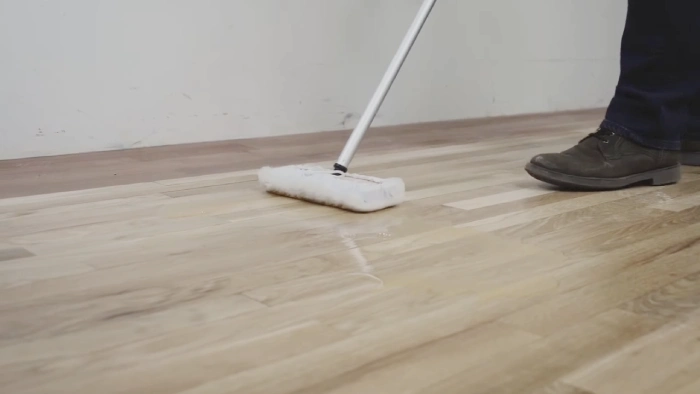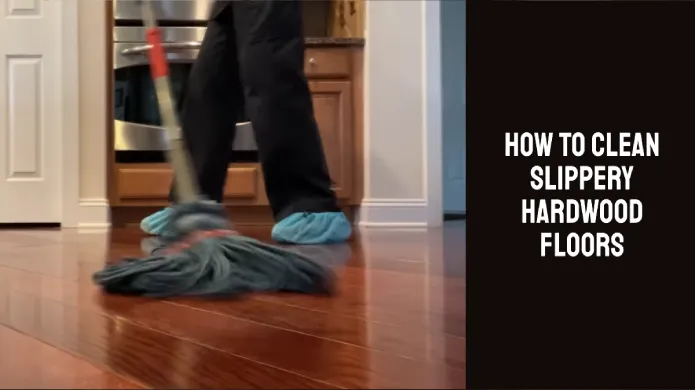How to Remove Floor Cleaner Residue: An Overview [Easy DIY]
Hardwood floors have long been preferred for homeowners looking to beautify their homes with an easy-to-maintain, durable option. However, despite their benefits, hardwood floors can also be susceptible to unsightly streaks, dulling, and buildup from cleaning products or everyday use.
That’s where proper cleaning techniques come in. It’s important to follow specific steps to avoid damaging the wood to clean residue from hardwood floors,.
To remove floor cleaner residue from hardwood floors, you can apply some methods such as using a water and vinegar solution, cleaning with mineral spirits, and baking soda and water solution. With these methods, your hardwood floors will be shiny and beautiful again.
Discover effective methods for removing tough floor cleaner residue from your beautiful hardwood floors with these simple steps. Learn multiple techniques to get rid of the unwanted gunk. Keep reading to find out.
How to Remove Floor Cleaner Residue: Simple
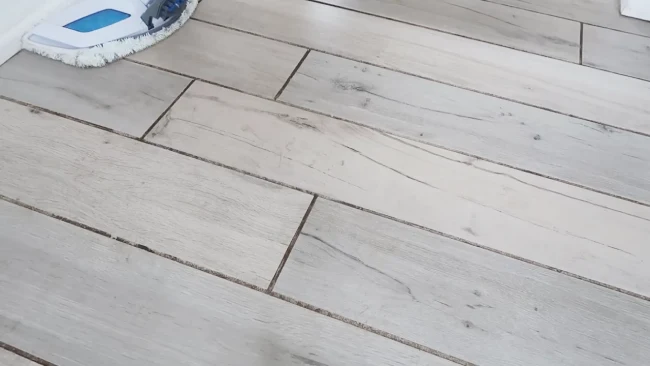
Cleaning residue off hardwood floors requires a few simple steps and the right cleaning products to avoid causing any damage. The following steps and methods can be used to remove all types of residue from hardwood floors:
Step One: Preparing Your Cleaning Tools And Solutions
The first step in preparing your cleaning tools is to ensure they are free from dirt or debris. This can be achieved by rinsing them with warm water and allowing them to air dry.
Selecting a suitable cleaning solution for your hardwood floors is important. Most commercial cleaners contain harsh chemicals that may damage the wood surface over time.
A safer alternative is to combine warm water and vinegar in equal parts. Simply mix the solution in a spray bottle and apply it to the affected floor areas.
Step Two: Sweeping And Vacuuming The Floor
Now that you have gathered all the necessary items, it’s time to move on to sweeping and vacuuming. These two steps are essential in removing any loose dirt or debris from your floor before moving on to deep cleaning.
Sweeping your hardwood floors should be done at least once a day using a soft-bristled broom. Start by removing any large pieces of debris with a dustpan and brush.
Then, gently sweep the entire floor surface, getting into corners and hard-to-reach areas. This will help prevent scratching when using other cleaning methods later on.
Vacuuming can also be used as an alternative method for sweeping but make sure to use only the bare floor setting without the beater bar attachment.
Step Three: Apply Deep Cleaning
After completing these two steps, you can begin deep cleaning the floor surface. You can remove residue with various cleaning techniques, depending on what type of buildup you have.
1: Mopping With Water And Vinegar Solution
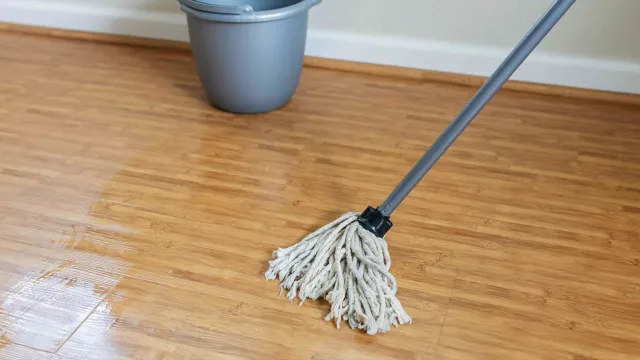
Mopping hardwood floors with vinegar and water is an effective method for removing residue. This simple yet powerful cleaning solution can help eliminate stubborn stains, dirt, and grime that may have accumulated on your flooring over time.
To prepare the solution, combine warm water and white vinegar in a bucket or cleaning container. Dip a clean microfiber mop into the mixture and wring it out until it is damp but not soaking wet.
Begin mopping your floor, starting at one end of the room and working toward the other. Ensure to rinse the mop frequently in the solution as you go along.
After you finish mopping, let your hardwood floors air dry completely before walking on them again.
2: Cleaning With Mineral Spirits
Mineral spirits, also known as white spirit or paint thinner, is a solvent commonly used in painting projects but has proven to be useful for cleaning purposes too.
To begin cleaning with mineral spirits, follow these steps:
1. Pour a small number of mineral spirits onto a clean cloth.
2. Gently rub the affected areas until all traces of residue have been removed.
3. Allow the floor to dry completely before walking on it again.
3: Using Baking Soda And Water
Baking soda, also known as sodium bicarbonate, is a natural cleaning agent that is gentle yet effective on most types of surfaces. The baking soda and water mixture helps break down the residue without damaging the wood.
Mix one tablespoon of baking soda with one gallon of warm water in a bucket for this method. Dip a soft cloth or mop into the solution and wring it out well before cleaning the floor. Be careful not to saturate the wood with too much water, as excess moisture can cause damage over time.
Using circular motions, gently scrub the affected area with a damp cloth or mop until the residue loosens. Rinse any remaining solution off the floor with clean water and dry it thoroughly with a towel or mop.
4: Applying Hardwood Floor Cleaner
Several types of cleaners are available for hardwood floors, including oil- and water-based options. Oil-based cleaners tend to be more effective at removing tough stains and residues, but they can also leave a greasy film on the floor if not properly rinsed.
On the other hand, water-based cleaners are typically easier to rinse off and do not leave behind any residue.
Following the manufacturer’s instructions is important when applying a hardwood floor cleaner. This may include diluting the product with water or using it undiluted, depending on the strength of the solution.
It is also important to work in small sections at a time to thoroughly clean each area before moving on to the next one.
5: Scrubbing With Microfiber Mop
Microfiber mops are designed with tiny fibers that can trap dirt and grime effectively, leaving surfaces cleaner than traditional methods.
To scrub the floor with a microfiber mop, dampen it slightly with warm water or a cleaning solution. Then, gently scrub the surface of the floor in circular motions until all visible residue has been removed.
When selecting a microfiber mop for hardwood floors, choose one with detachable pads that can be machine-washed between uses. This will ensure that any remaining debris on the pad does not transfer back onto your clean hardwood surface during future use.
What Kinds of Residue Do Hardwood Floors Leave Behind?
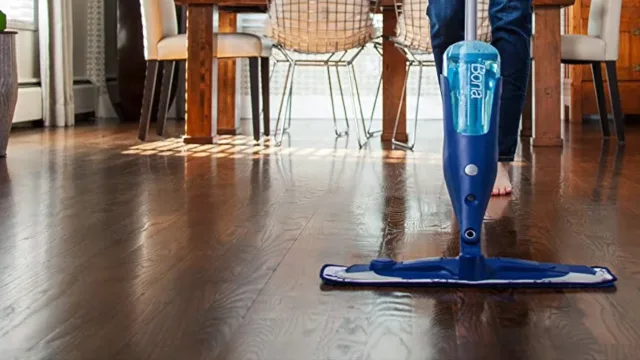
Hardwood floors are popular among homeowners due to their natural beauty and durability. However, over time, residue can build up on the surface of the hardwood floor, causing it to look dull and dirty.
Understanding the types of residue accumulating on hardwood floors is essential in choosing the right cleaning method.
One common type of residue found on hardwood floors is dirt and dust particles tracked in from outside or brought in by pets. These tiny particles can scratch and damage the wood’s finish if not cleaned regularly.
Another type of buildup is caused by spills, such as food or drinks that may leave sticky stains behind when not wiped up immediately. Also, some commercial cleaners contain chemicals that can leave a filmy residue on your hardwood flooring.
What Are the Floor Damages Caused By Residue?
The residue left on hardwood floors can cause various degrees of damage, depending on the type and duration of the buildup. Initially, residue may only appear as a cloudy film or slight discoloration that is easily ignored.
Eventually, it can get into the wood grain and cause deeper stains that are harder to remove.
One way to assess the extent of damage caused by residue is to conduct a water test. Simply drop a few droplets of water onto an inconspicuous area of your hardwood flooring where you suspect there might be some residue buildup.
Observe how fast the water beads and if it penetrates through small cracks between planks or seams.
If it soaks in quickly and leaves dark spots behind, it means that moisture has penetrated into the wood fibers indicating that there could be long-term damage from residual buildup.
How to Deal with Pet Stains on Hardwood Floors?
If your pet frequently leaves stains or marks on your hardwood floors, removing these blemishes without damaging the wood may be challenging. However, there are ways to effectively clean up after your furry friend and restore your floors’ natural beauty.
At first, if you notice a fresh stain, use paper towels or a cloth to soak up any excess liquid before it seeps into the wood.
Then, use a mixture of warm water and mild dish soap to gently scrub away the remaining stain. Be sure not to use too much water as this may cause warping or swelling of the flooring. Once cleaned, dry the area thoroughly with a clean towel.
There are still options for removal. One effective method is using hydrogen peroxide mixed with baking soda. Apply this solution directly onto the stained area and let it sit for several hours before wiping it away with a damp cloth.
Another option is purchasing specialized pet stain removers from hardware stores or online retailers.
Why does the floor have residue after mopping?

If you notice a dirty film on your floors after mopping, there’s a good chance you’re not using enough water. The excess solution can remain on the surface by not diluting your cleaner properly, leaving dirt behind.
Ensure you’re using enough water to allow your cleaner to clean deeply and leave your floors spotless.
Additionally, if the mop is not properly wrung out, excess water may result in a residue buildup on the floors. Using the appropriate amount of cleaning solution and water is crucial to thoroughly clean the floors.
A professional cleaning approach involves using the right tools and techniques to ensure that no excess residue is left behind, leaving your floors looking their cleanest and most beautiful.
Does Bona floor cleaner leave any residues behind?
Bona floor cleaners are specially formulated to effectively clean and protect floors without leaving any residue behind. This premium quality cleaner is designed to deep clean and remove dirt, grime and other contaminants from various floor surfaces.
Its unique, non-toxic, water-based formula is pH-balanced and is specifically designed to not dull or harm the finish on your floors.
Furthermore, the ingredients used in Bona products are carefully selected to be safe for the environment. This ensures that Bona floor cleaners are safe for daily use and sustainable. With Bona floor cleaners, you can rest assured that you are getting a complete cleaning solution that does not leave any residues behind.
How often should floors be mopped to remove the residue?
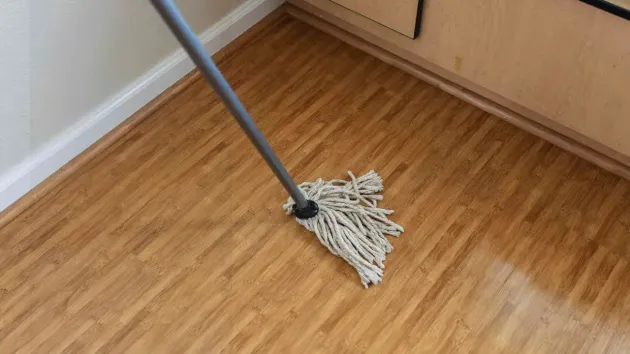
Maintaining clean floors is critical to maintaining a sterile and healthy living environment. Professional standards mandate that floors must be mopped once a week, primarily in high-traffic areas such as the kitchen and bathroom.
Regular mopping ensures that any stains from drips and spills are effectively removed and the floors remain sparkling clean. However, it must be noted that simply mopping is not sufficient, as a thorough cleaning requires vacuuming or sweeping the floor before mopping.
Residue Build-up: A Hardwood Floor’s Worst Enemy
Hardwood floors are undoubtedly a luxurious addition to any home but require regular maintenance to preserve their pristine appearance. It’s essential to be aware of the types of residue that can accumulate on hardwood floors and their origin and impact on the finish.
Once you’ve assessed the damage caused by residue, it’s time to carefully remove it from your floors. By following these steps and taking measured precautions during cleaning, you can be confident that your hardwood floors will remain beautiful for many years.



